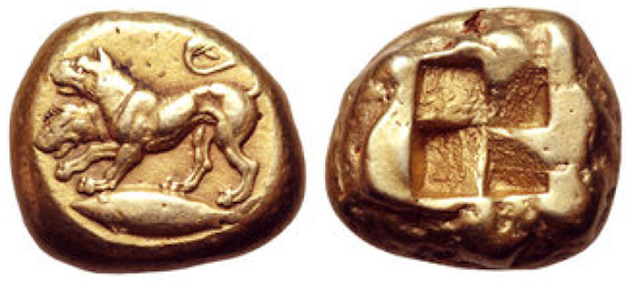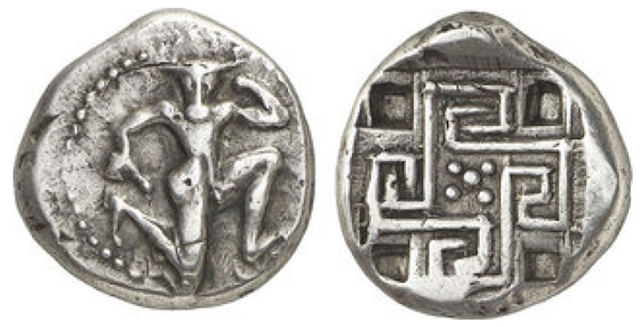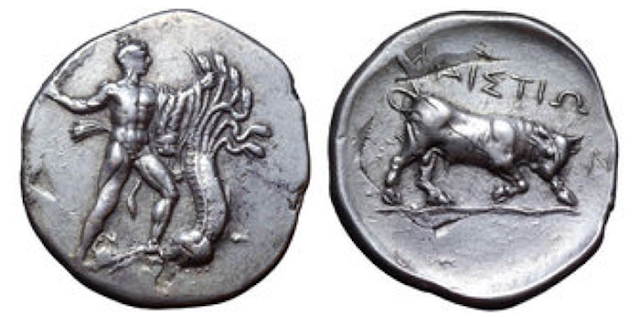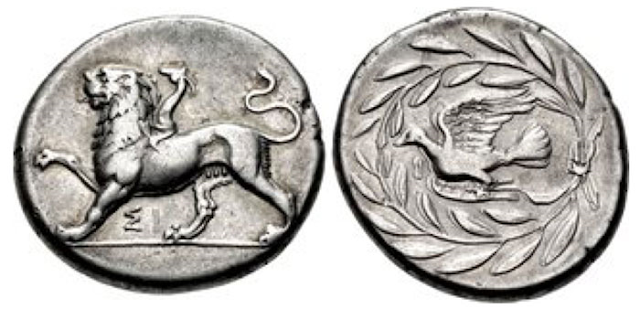 | Medusa often appears on ancient coins. One of three sisters known as Gorgons, they appeared with wings, snakes for hair, and expressions that bore sharp fangs and a tongue. Mortals were in grave danger by merely looking at them because they turned to stone. The image of Medusa also had protective qualities and was a popular motif. |
| Cerberus (or Kerberos) is a ferocious three-headed dog who guards the gateway to the land of the dead. He is often depicted as the companion of Hades (or Pluto,) god of the underworld. As his 12th Labor, Herakles wrestles Cerberus into submission and drags him back to the land of the living. Cerberus appears on a magnificent electrum stater of Cyzicus (c. 500-450 BCE). |  |




No comments:
Post a Comment